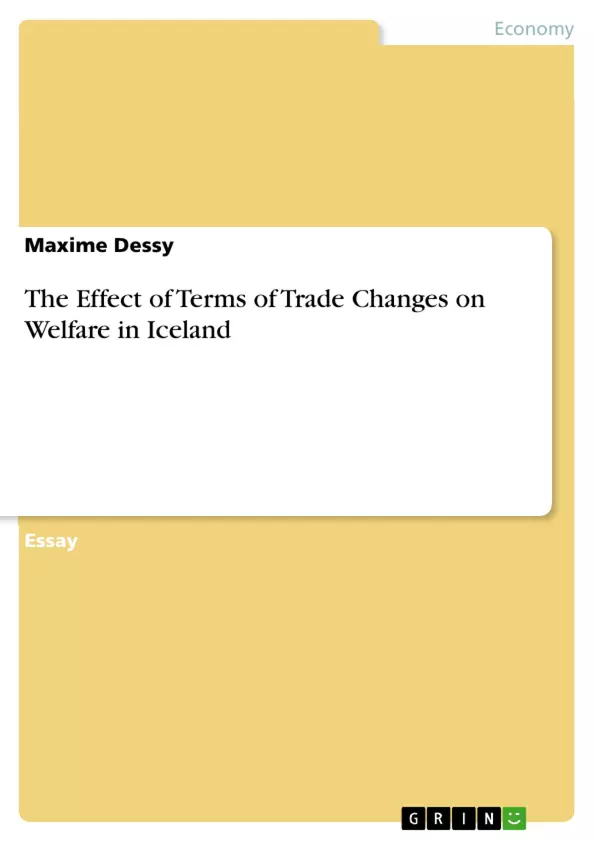From 1971 to 2006, terms of trade changes had a negative and rather small effect on welfare in Iceland. For this covered period, the average yearly percentage growth of Iceland’s terms of trade was minus 0.21%. The time series diagram and the time trend line show this downward trend of Iceland’s terms of trade. The yearly average percentage change in GDP due to terms of trade was minus 0.05%. This effect is very small compared to the actual 24.34% average annual growth of Iceland's GDP (EconLit F110, F140, O470).
Inhaltsverzeichnis (Table of Contents)
- Abstract
- The Effect of Terms of Trade Changes on Welfare in Iceland
- Effect of Terms of Trade Changes
- Effect of Terms of Trade Changes
- Effect of Terms of Trade Changes
- Figure 1. The evolution of Iceland's terms of trade between 1971 and 2006. Year of reference: 1995. Note. Data from International Monetary Fund (2008). Time series diagram and time trend line were obtained using the R statistical environment (R Development Core Team, 2008).
Zielsetzung und Themenschwerpunkte (Objectives and Key Themes)
This report investigates the effect of terms of trade changes on the welfare of Iceland from 1971 to 2006. It examines the relationship between terms of trade fluctuations and changes in Iceland's GDP.
- Terms of Trade Changes in Iceland
- Impact of Terms of Trade on GDP Growth
- The Importance of Import Share in GDP
- Welfare Implications of Terms of Trade Changes
- Comparison of Actual GDP Growth with Theoretical Estimates
Zusammenfassung der Kapitel (Chapter Summaries)
The paper begins by establishing the general relationship between terms of trade and welfare, drawing from existing economic literature. It then focuses on the Icelandic context, providing data on GDP, export unit values, and import unit values from 1971 to 2006. The report calculates the yearly average percentage growth rate of Iceland's terms of trade and explores the volatility of these changes, particularly highlighting the significant drop from 1973 to 1975. Finally, the paper utilizes the share of imports in GDP to approximate the impact of terms of trade changes on Iceland's GDP growth, highlighting the relatively small effect of these changes on overall economic welfare.
Schlüsselwörter (Keywords)
This report explores the key concepts of terms of trade, GDP, welfare, and the impact of import share on economic growth. It focuses on the Icelandic case study, analyzing data from 1971 to 2006 to assess the relationship between terms of trade changes and economic performance.
- Quote paper
- Maxime Dessy (Author), 2008, The Effect of Terms of Trade Changes on Welfare in Iceland, Munich, GRIN Verlag, https://www.grin.com/document/145291



